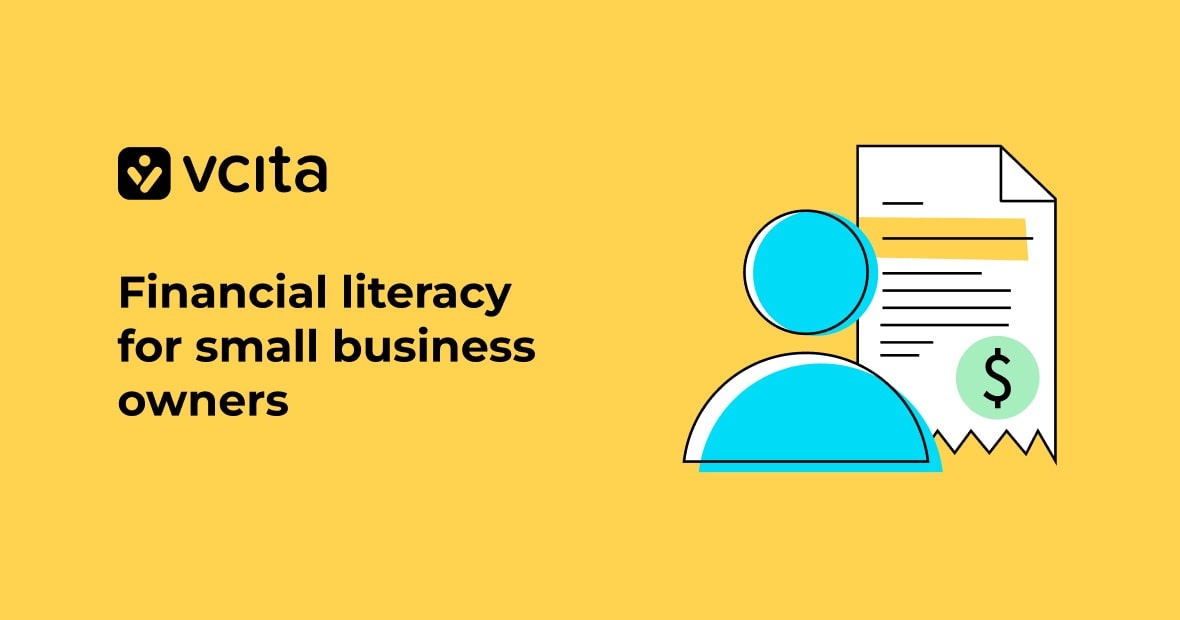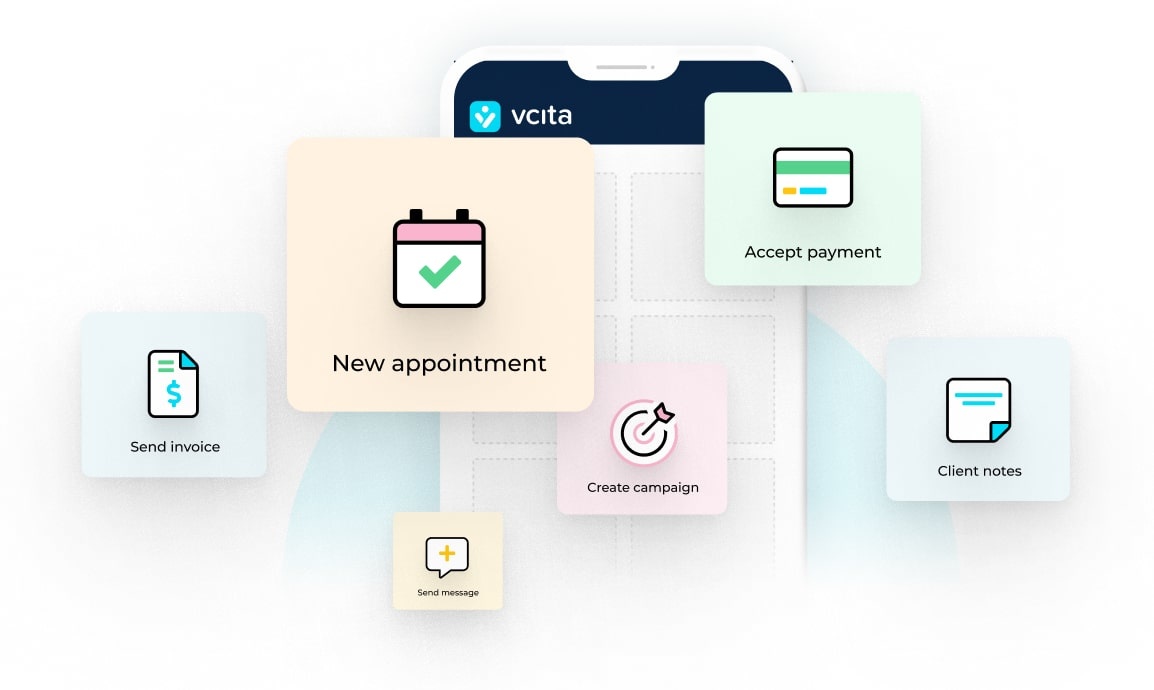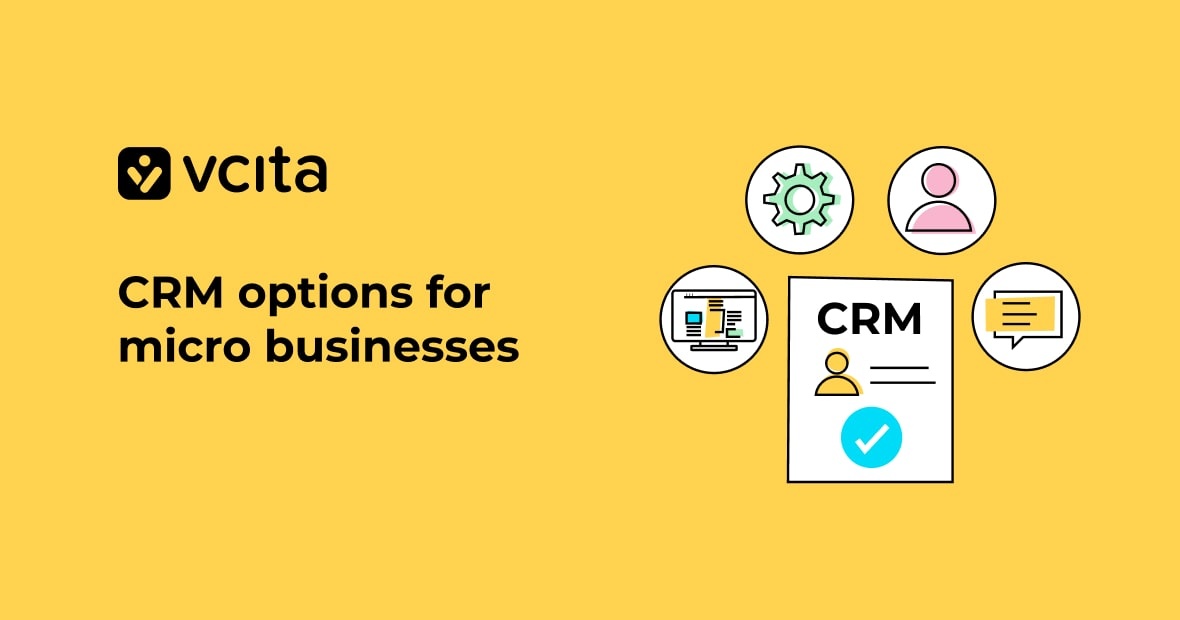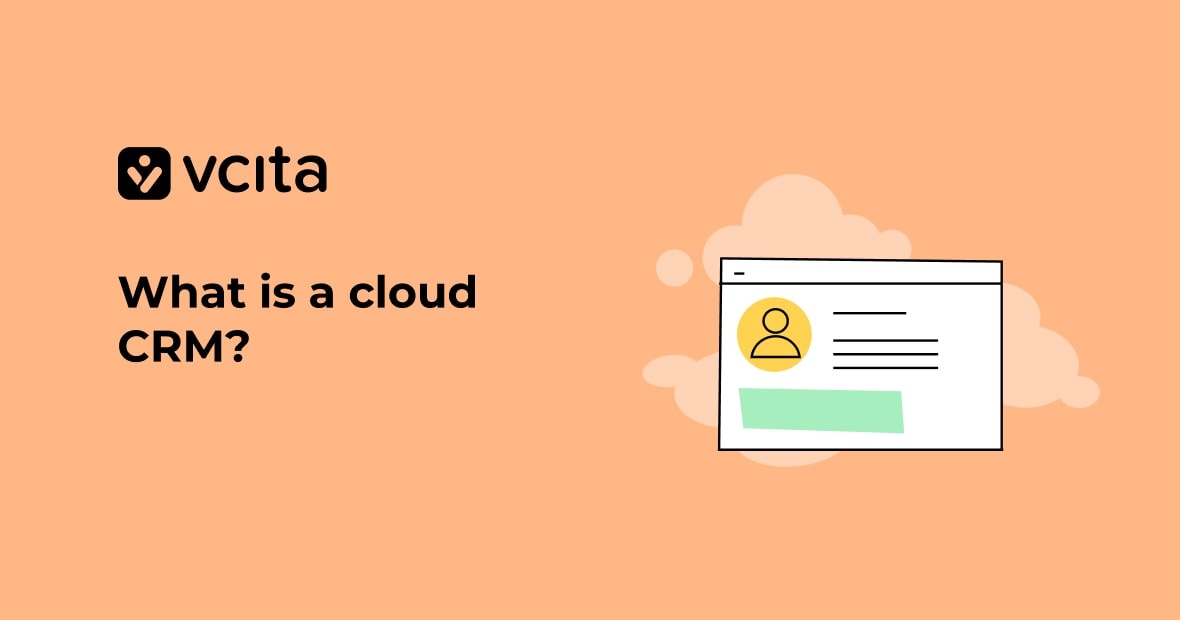Money affects every decision that you make in a small business. Pricing, payroll, taxes, tools, you feel it all. Financial literacy is the skill that keeps you calm when cash is tight, and confident when growth shows up.
Thankfully, you don’t need Wall Street-level math. All you need are some good plain habits, a few key numbers, and systems that don’t break. This clear, simple, and practical guide sets you on the right path, with specific information about how a platform like vcita can support your day-to-day financial health.
Key takeaways
- Small business financial literacy means knowing your cash flow, profit, and working capital, using that knowledge to make weekly decisions.
- Three statements you must read: Profit & Loss (P&L), Balance Sheet, Cash Flow Statement.
- Set prices with margin, not vibe: Know cost of goods sold (COGS), gross margin %, and contribution margin.
- Break-even formula: Fixed costs ÷ Contribution margin per unit = number of sales to cover costs.
- Working capital basics: Speed up invoicing, take deposits, tighten terms, manage inventory.
- 13-week cash forecast = simple weekly plan for bills, payroll, and collections.
- Budget by quarter: Plan revenue, OPEX, taxes, and debt payments.
- Use tools that link work to money: invoicing, payments, reminders, scheduling, CRM. vcita can help connect these.
- Tax rhythm: set aside money, pay estimates on time, keep clean records.
- Make finance a habit: a weekly 30-minute review and a monthly close.
Why financial literacy matters (and why it’s simpler than it sounds)
Financial literacy means knowing what your numbers say and what to do next. It is not about fancy models, but about being able to answer certain key questions like:
- Are we making money on each sale?
- Do we have cash to pay people on time?
- If we grow 20% next quarter, can we fund it?
- If revenue dips 15%, what do we cut and when?
Good answers lower stress and raise your odds of survival. Most small businesses don’t fail because the idea is bad; they fail because cash runs out. Learning the basics gives you the power and time to make better choices.
The three financial statements you actually need
You don’t need to love spreadsheets, and you don’t need to read dozens every month. But these are the three you do need to read:
1) Profit & Loss (P&L)
- What it shows: Your gross profit, which is revenue minus Cost of Goods Sold (COGS); your operating profit; and your net profit, which is revenue minus all other expenses.
- How to use it: Spot if margins are slipping. Watch expenses as a percentage of revenue, and compare month over month to see if the numbers go up, down, or stay stable.
2) Balance Sheet
- What it shows: What you own (assets), what you owe (liabilities), and what’s left over (equity).
- Key lines for owners to read: Cash, accounts receivable (A/R), inventory, accounts payable (A/P), and debt.
- How to use it: Check your working capital (current assets minus current liabilities). If this gets tight, cash will get tight too.
3) Cash Flow Statement
- What it shows: Where cash actually moved from and to, typically operations, investing, and financing.
- How to use it: Confirm that profit is turning into cash. If not, look at your accounts receivable (A/R), accounts payable (A/P), inventory, or capital spending.
If your accounting tool confuses you, ask your bookkeeper for a one-page view that shows last month vs. prior month vs. same month last year, so that you can easily spot patterns. Patterns are your friend.
Profit is a score. Cash flow is oxygen.
You can show a profit and still run out of cash. Here are some reasons why:
- You invoice but the client pays late: the balance sheet shows a profit, but the cash hasn’t arrived.
- You buy inventory now to sell later: cash goes out today, but the profit comes later.
- You repay debt or buy equipment: you’ve spent cash, but it won’t show up as an expense on your P&L sheet.
How to keep track: build a 13-week cash forecast.
- List expected cash in (by client or product) week by week.
- List cash out (payroll, rent, vendors, taxes, debt).
- Update every Friday and shift items into the correct category if timing changes.
- Use it to make decisions early: collect payment faster, delay a buy, or move a project.
If you use vcita, send invoices as soon as work is done, add online payment links, and enable automated reminders. You can also take deposits during online booking to pull cash in earlier. This can tighten the whole cash cycle.
Pricing and margins: the simple way to set prices you can defend
Many owners set prices by guessing or matching competitors. That risks thin margins and poor profits. To fatten your margins, make sure you understand these terms:
- COGS (Cost of Goods Sold): direct costs needed to deliver the product or service, such as materials, direct labor, or transaction fees tied to sales.
- Gross Margin: this is a formula: (Revenue–COGS) ÷ Revenue.
- Contribution Margin per unit: This is what you have left to cover fixed costs and profit. The formula is Price–variable costs per unit.
Break-even formula (keep this handy)
Break-even units = Fixed Costs ÷ Contribution Margin per unit.
Example: If your fixed costs are $20,000/month and your contribution margin per unit is $50, you need 400 units to break even. After that, each sale adds to profit.
Practical pricing steps
- Write down every variable cost per sale. Don’t forget payment processing fees.
- Decide the gross margin target you need (e.g., 50%+ for services).
- Test your price against the market and your value.
- Add a price review every six months. Costs move, so prices should too.
Where vcita helps: build packages and service catalogs with clear prices, publish them in your client portal, and require deposits when needed. If your prices change, you’ll only need to update one place to keep billing consistent.
Budgeting that doesn’t feel like a chore
A budget is a plan for money. Keep it light with these elements:
- Revenue plan. There are three main types: conservative, base, and stretch. Use conservative for cash planning, base to keep things ticking over, and stretch to drive growth.
- OPEX plan. This covers items like rent, payroll, marketing, software, insurance.
- Tax set-aside. Treat your taxes like a monthly bill and move money to a separate account immediately so you won’t panic when tax season arrives.
- Debt payments. Include the principal and interest when doing your calculations.
- Quarterly review. Adjust your budgeting for new realities four times a year.
If you hate spreadsheets, start with a 90-day budget, because short horizons are easier to handle.
Working capital: speed the cash in, slow the cash out
Working capital keeps the lights on. Improve it with small moves that get you paid faster, pay out smarter, and manage inventory better.
Get paid faster
- Invoice the same day
- Offer online payments
- Set clear terms (Net 7 or Net 14 beats Net 30 if your clients accept it)
- Send reminders automatically
- Add late fees if that fits your market
- Take deposits at the time of booking
vcita can send invoices, accept cards, track who owes you, and issue friendly reminders without you doing manual follow-ups. For service businesses, vcita’s online scheduling with pre-payment or deposits can shift cash earlier in the cycle.
Pay smarter
- Use vendor terms. If Net 30 becomes Net 45, you’ve bought time.
- Batch payments once a week so you always see the cash picture.
- Don’t delay payroll or taxes. Pay on time.
Manage inventory
- Keep fast movers in stock
- Cut slow movers
- Run small tests before big buys
- Track inventory turns (COGS ÷ average inventory), because low turns mean cash is sitting on shelves
Taxes: simple habits that reduce pain
I’m not giving tax advice, because laws vary by country and state. But these habits help with tax planning no matter where you are:
- Separate your accounts: use your business bank account and card only for anything connected to your business.
- Save for taxes monthly: a fixed % of revenue moves to a tax account every month, so there’s no panic when it’s time to pay.
- Collect and remit sales tax or VAT if required.
- Estimated taxes: mark calendar for due dates so you don’t get surprised.
- Clean records: make sure receipts are stored, mileage tracked, and payroll filings done, on time.
If your clients pay through vcita, you can record payments in one place to keep your client card and history tidy, which makes year-end easier when you or your accountant reconcile accounts.
Funding: pick the right tool for the job
There is no perfect funding source for small business capital. Tradeoffs exist, so consider the pros and cons carefully. Top options include:
- Line of credit: good for timing gaps between payables and receivables. Usually cheaper than credit cards.
- Term loan: good for equipment or projects that pay back over years.
- Credit cards: convenient, but watch rates carefully and pay on time.
- Invoice factoring: converts invoices to cash now, at a fee.
- Merchant cash advance: fast but expensive. Use it only if you have a short, clear path to repay.
Rule of thumb: match the loan term to the life of what you’re funding. For example, don’t put a five-year asset on a 30-day loan instrument.
Risk management: protect the thing you’re building
Every business should have:
- Emergency fund: enough to cover 1–3 months of core expenses.
- Insurance: general liability, professional liability, workers’ comp, and cyber if you handle sensitive data.
- Fraud controls: require approvals for large payments, reconcile bank accounts monthly, and use two-factor authentication.
- Customer mix: if one client makes up more than 25% of your revenue, work on balancing things to be distributed more broadly.
- Data backups and access control: simple, boring, essential.
A simple weekly finance ritual (30 minutes)
- Check cash: balance today vs. upcoming bills and payroll.
- Review A/R: who owes you, how long, what’s next.
- Send or schedule invoices: immediately after work is done.
- Update your 13-week cash forecast.
- Glance at KPIs: margins, DSO (days sales outstanding), pipeline health.
- Two actions: two concrete moves to improve cash or margin this week.
With vcita, most of this is within your daily workflow. Because client conversations, estimates, invoices, and payments sit in one place, you’re not chasing data across tools.
The 8 numbers worth tracking
- Gross margin % = (Revenue–COGS) ÷ Revenue
- Operating margin % = Operating profit ÷ Revenue
- DSO (days sales outstanding) = average time customers take to pay
- DPO (days payables outstanding) = how long you take to pay vendors
- Inventory turns = COGS ÷ average inventory
- CAC (customer acquisition cost) = total sales/marketing cost to win a new customer
- LTV (lifetime value) = profit you expect from a typical customer over time
- Churn rate (if you have recurring clients) = % of customers who leave in a given period
Track monthly, but don’t obsess over numbers daily. The trend is what matters.
Tools and workflows that connect work to money
This is where many small businesses struggle. Work happens in one place, billing in another, and follow-up in a third, so numbers can fall through the cracks. Pick tools that close the loop, like:
- CRM + scheduling: capture the lead, book the job, set expectations
- Estimates: confirm scope, price, and terms
- Invoicing + payments: send right away and accept online payments
- Reminders and follow-ups: make them automatic, polite, and consistent
- Client records and history: all in one place, so anyone on your team can help a client fast
vcita brings these pieces together for service businesses. You can:
- Create and send estimates that convert into invoices.
- Set pre-payments or deposits via the client portal.
- Take cards online, record offline payments, and remind clients who still owe.
- Keep the client conversation (messages, calls & texts) and the payment history in one place.
- Use built-in BizAI to draft service descriptions or suggested replies, which saves time on admin so you invoice sooner.
It’s not magic; it’s just closing up the gaps where money leaks out.
Pricing playbook for service businesses
If you sell services, your pricing can often be fuzzy. Use these rules to keep things clear:
- Price by outcome, not hourly, whenever you can.
- Offer three tiers: basic, standard, and premium (most people will pick the middle one).
- Anchor with a clear premium to show the value range.
- Review pricing twice a year. Labor and tools go up, so your price should reflect that.
- Grandfather existing clients carefully. Reward loyalty, but set a clear date for old pricing to end.
vcita’s packages make this easier to manage and present. You keep one source of truth for services and rates.
Hiring help: bookkeeper, accountant, fractional CFO
You don’t have to do it alone. These are the people who matter in your business’ financial life:
- Bookkeeper: handles daily records, reconciles transactions, prepares monthly statements.
- Accountant/CPA: advises on taxes and compliance; files returns.
- Fractional CFO: plans cash, budgets, pricing strategy, funding. Use for projects or quarterly reviews.
Questions to ask before hiring:
- What reports will I see each month?
- How soon after month-end will I receive reports?
- How do you handle receipts and categorization?
- What’s your response time for questions?
- Can you help me build a 13-week cash model?
Reading your data without getting lost
A few patterns to watch:
- Margin drift: if gross margin slips for three months, check costs or pricing.
- Revenue concentration: got one big client? Start a plan to diversify.
- Collections lag: DSO rising? Tighten terms or add deposits.
- Busy yet broke: lots of activity, low cash? Improve your invoice discipline and review pricing.
Don’t over-analyze. Pick one issue, change one thing, and re-check next month.
Common mistakes (and quick fixes)
- Waiting too long to invoice. Invoice same day and add online payment links.
- Letting scope creep slide. Use written estimates and charge for additions.
- Underpricing from fear. Know your margin, offer tiers, and deliver value.
- Too many tools that don’t talk to each other. Consolidate them where possible.
- No cash buffer. Start with putting 1% of revenue into savings and grow it to 5–10%.
- Ignoring taxes until April. Monthly set-asides prevent panic.
A 30-60-90 day plan to get financially confident
Days 1–30
- Open a separate tax savings account.
- Build your first 13-week cash forecast.
- List your top 10 customers; confirm terms; send statements.
- Map your service catalog and prices in one place (vcita can hold this).
- Turn on online payments and automated reminders.
Days 31–60
- Review COGS and raise prices where margins are thin.
- Move or cut slow-moving inventory.
- Standardize estimates and deposits for new work.
- Set your weekly finance ritual on the calendar.
Days 61–90
- Build a simple 90-day budget.
- Pick 3 KPIs and track them monthly.
- Meet with your accountant to plan taxes and entity needs.
- Create one “cash lever” you can pull fast (e.g. a flash sale to warm clients, pre-paid packages, or seasonal deposit plans).
The financial know-how that small business owners need
You don’t need perfect spreadsheets to run a steady business, but you do need rhythm, visibility, and a few clear rules. Tighten how money flows in, be deliberate about how it goes out, and keep your eyes on margins. The rest is consistency.
If you want one move today: write the next three invoices, enable online payments, and set an automatic reminder. Tools like vcita make those steps quick to implement, and once money moves faster, everything gets easier.
Mini-glossary (plain English)
- COGS: direct costs per sale
- Gross margin: what’s left after COGS but before overhead
- Operating expenses (OPEX): typically rent, payroll, tools, and marketing
- Working capital: short-term health, namely cash+A/R+inventory–A/P
- DSO/DPO: how many days on average to collect/pay
- Contribution margin: money per sale to cover overhead and profit
- Break-even: sales needed to cover all costs
- Runway: months you can operate with current cash and burn
Quick FAQ
Do I need an accountant?
Yes, at least for taxes and high-level advice. A few hours of guidance can save you more than the fee.
How often should I raise prices?
Review twice a year. If costs rise or you add value, adjust your prices. Communicate clearly and give notice about pricing changes.
What’s the easiest win for cash flow?
Invoice faster and take deposits. Even 20% up front changes the math.
What software do I need?
At minimum: accounting, invoicing/payments, and a simple CRM. If you run a service business, vcita combines CRM, scheduling, estimates, invoices, payments, reminders, and a client portal in one place.
Is this financial advice?
No. This is general guidance. Your situation may be different, so talk to a qualified pro.




























